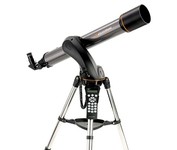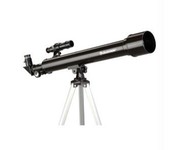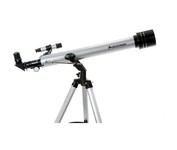Products reviews
Celestron NexStar 80 SLT 22086 (100 x 80mm) Telescope$200.00 to $380.00
Tags:celestron, nexstar, 80, slt, 22086, 100, x, 80mm, telescope, | Celestron PowerSeeker 50 Telescope$35.00 to $50.00
Tags:celestron, powerseeker, 50, telescope, | Celestron PS 60 (175 x 60mm) Telescope$39.00 to $63.00
Tags:celestron, ps, 60, 175, x, 60mm, telescope, |
Celestron AstroMaster 90AZ (50 x 90mm) Telescope
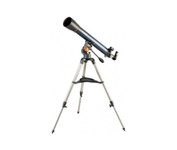
The AstroMaster produce bright, clear images of the Moon and planets. It is easy to see the moons of Jupiter and the rings of Saturn with every one of these fine instruments.
Bushnell NorthStar 78-8845 (675 x 114mm) Telescope
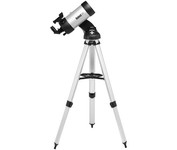
Our most powerfull, advanced technology reflector telescope with up to 675x magnification and massive 4 1/2 inch reflector mirror. "Goto" Computerized tracking technology. Red Dot LED finderscope. Remote hand-held control module. Camera adaptable. Quick release tripod. Kinematic mount. Accessory tray. 20,000 Object Onboard Starfinding Computer. 1.25" Format Eyepieces. Barlow Lens. A great starting telescope!Minimize
Bushnell Sky Tour 78-9930 Telescope
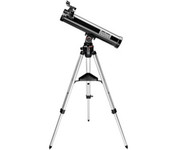
Please do not throw debris into the black hole. Actually, the only rule on this guided trip is that you enjoy the view. The ultimate first telescope, our new Voyager® Sky Tour™ series gives amateur stargazers a pro-grade audio tour of the night sky. Its Illuminated Smart Mount points the way as the talking handset describes constellations and planets, and keeps you engaged with entertaining facts and mythology tidbits. Keeping pace is easy with the LED red dot finderscope. You’re an instant expert with the Sky Tour series.Minimize
Educational Insights 5273 (80 x 50mm) Telescope

With the GeoVision microscope and telescope set, you can view everything from a microbe to the moon! The portable 360mm telescope features lightweight metal tube construction and a 50mm achromatic objective lens. The all-glass optics and rack-and-pinion focusing deliver clear, up-close images at magnifications from 20x to 80x. Easy-to-use refractor design and table-top tripod make it perfect for on-the-go discovery. The microscope features durable die-cast metal construction for years of micro-exploring fun.Minimize
